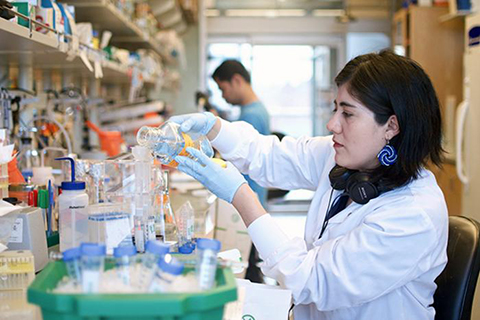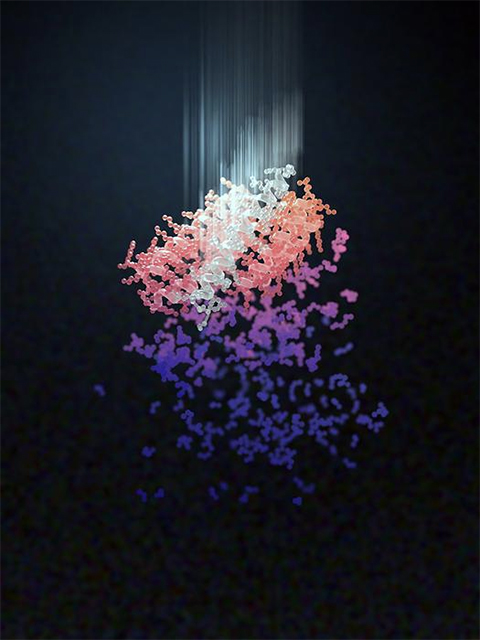AI generates proteins with exceptional binding strength
A new study in Nature reports an AI-driven advance in biotechnology with implications for drug development, disease detection, and environmental monitoring. Scientists at the Institute for Protein Design at the University of Washington School of Medicine used software to create protein molecules that bind with exceptionally high affinity and specificity to a variety of challenging biomarkers, including human hormones. Notably, the scientists achieved the highest interaction strength ever reported between a computer-generated biomolecule and its target.

Senior author David Baker, professor of biochemistry at UW Medicine, Howard Hughes Medical Institute investigator, and recipient of the 2023 Frontiers of Knowledge Award in Biology and Biomedicine, emphasized the potential impact: "The ability to generate novel proteins with such high binding affinity and specificity opens up a world of possibilities, from new disease treatments to advanced diagnostics."

The team, led by Baker Lab members Susana Vazquez-Torres, Preetham Venkatesh, and Phil Leung, set out to create proteins that could bind to glucagon, neuropeptide Y, parathyroid hormone, and other helical peptide targets. Such molecules, crucial in biological systems, are especially difficult for drugs and diagnostic tools to recognize because they often lack stable molecular structures. Antibodies can be used to detect some of these medically relevant targets but are often costly to produce and have limited shelf lives.
"There are many diseases that are difficult to treat today simply because it is so challenging to detect certain molecules in the body. As tools for diagnosis, designed proteins may offer a more cost-effective alternative to antibodies," explained Venkatesh.
The study introduces a novel protein design approach that uses advanced deep-learning methods. The researchers present a new way of using RFdiffusion, a generative model for creating new protein shapes, in conjunction with the sequence-design tool ProteinMPNN. Developed in the Baker Lab, these programs allow scientists to create functional proteins more efficiently than ever before. By combining these tools in new ways, the team generated binding proteins by using limited target information, such as a peptide's amino acid sequence alone. The broad implications of this "build to fit" approach suggest a new era in biotechnology in which AI-generated proteins can be used to detect complex molecules relevant to human health and the environment.

"We're witnessing an exciting era in protein design, where advanced artificial intelligence tools, like the ones featured in our study, are accelerating the improvement of protein activity. This breakthrough is set to redefine the landscape of biotechnology," noted Vazquez-Torres.
In collaboration with the Joseph Rogers Lab at the University of Copenhagen and the Andrew Hoofnagle Lab at UW Medicine, the team conducted laboratory tests to validate their biodesign methods. Mass spectrometry was used to detect designed proteins that bind to low-concentration peptides in human serum, thereby demonstrating the potential for sensitive and accurate disease diagnostics. Additionally, the proteins were found to retain their target binding abilities despite harsh conditions including high heat, a crucial attribute for real-world application. Further showcasing the method's potential, the researchers integrated a high-affinity parathyroid hormone binder into a biosensor system and achieved a 21-fold increase in bioluminescence signal in samples that contained the target hormone. This integration into a diagnostic device highlights the immediate practical applications of AI-generated proteins.
The study, which illustrates the confluence of biotechnology and artificial intelligence and sets a new precedent in both fields, appears in Nature with the title “De novo design of high-affinity binders of bioactive helical peptides.”
(This article was produced by the University of Washington School of Medicine/UW Medicine.)
Enjoy reading ASBMB Today?
Become a member to receive the print edition four times a year and the digital edition monthly.
Learn moreGet the latest from ASBMB Today
Enter your email address, and we’ll send you a weekly email with recent articles, interviews and more.
Latest in Science
Science highlights or most popular articles

Bacteriophage protein could make queso fresco safer
Researchers characterized the structure and function of PlyP100, a bacteriophage protein that shows promise as a food-safe antimicrobial for preventing Listeria monocytogenes growth in fresh cheeses.

Building the blueprint to block HIV
Wesley Sundquist will present his work on the HIV capsid and revolutionary drug, Lenacapavir, at the ASBMB Annual Meeting, March 7–10, in Maryland.

Gut microbes hijack cancer pathway in high-fat diets
Researchers at the Feinstein Institutes for Medical Research found that a high-fat diet increases ammonia-producing bacteria in the gut microbiome of mice, which in turn disrupts TGF-β signaling and promotes colorectal cancer.

Mapping fentanyl’s cellular footprint
Using a new imaging method, researchers at State University of New York at Buffalo traced fentanyl’s effects inside brain immune cells, revealing how the drug alters lipid droplets, pointing to new paths for addiction diagnostics.

Designing life’s building blocks with AI
Tanja Kortemme, a professor at the University of California, San Francisco, will discuss her research using computational biology to engineer proteins at the 2026 ASBMB Annual Meeting.

Cholesterol as a novel biomarker for Fragile X syndrome
Researchers in Quebec identified lower levels of a brain cholesterol metabolite, 24-hydroxycholesterol, in patients with fragile X syndrome, a finding that could provide a simple blood-based biomarker for understanding and managing the condition.

